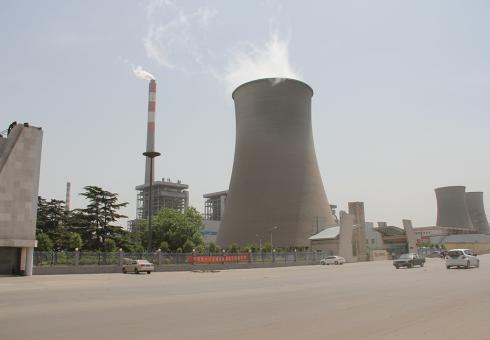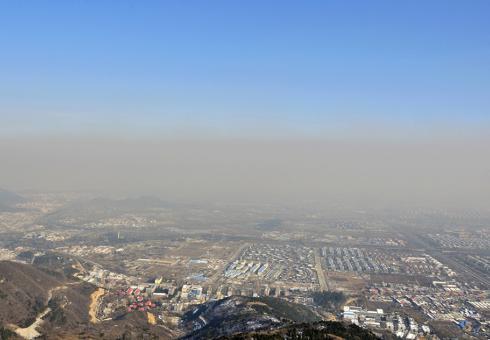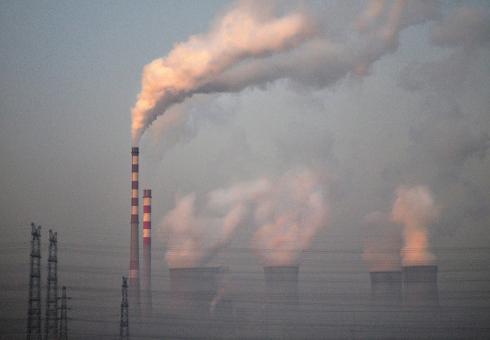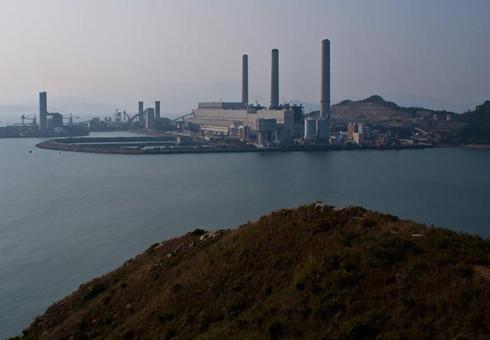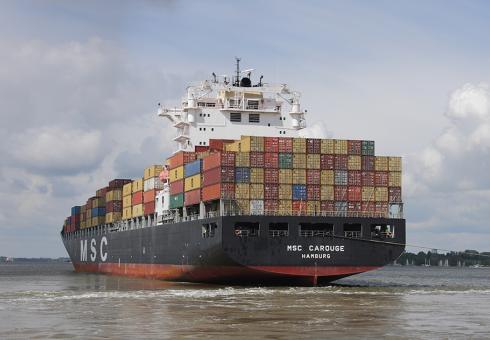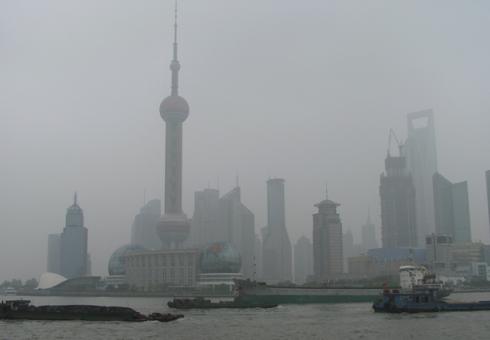How concurrent climate and air pollution policies could prove a win-win combination
News and Outreach: Da Zhang
Improved air quality could prevent nearly 2,000 premature deaths in the U.S.
Firms learn from experience in the measurement, reporting and verification of CO2 emissions under China’s emissions trading systems
Study by Joint Program-affiliated researchers highlights need for mercury emissions-control policy
A 4 percent reduction per year in carbon dioxide emissions should net $339 billion in health savings in 2030, researchers estimate
New method could sharpen international climate policy design
Study: China could go big on wind power — if it adjusts its grid operations
China has an opportunity to massively increase its use of wind power — if it properly integrates wind into its existing power system, according to a newly published MIT study.
Analyzing coal and energy caps as carbon policy instruments for China
An article published this week on the University of Nottingham Climate Policy Institute Blog: "China: Local incentives drive action on global climate change".
You can find the full article by following the link below:
http://blogs.nottingham.ac.uk/chinapolicyinstitute/2014/09/18/china-loc…;
Written by Da Zhang, Valerie J. Karplus and Zhang Xiliang.
As countries ponder post-2020 action to halt global climate change, China has emerged as a more determined and prepared contributor. Why? The need to address climate change is closely linked to urgent domestic priorities such as cleaning up the air and steering the economy toward a path of sustainable growth. Environmental action is no longer a luxury but an imperative for China’s citizens and policymakers, who recently declared war on the haze and smog they frequently wake up to. And because the severe air pollution problem and climate change share some common roots—burning coal and other fossil fuels—carefully planned countermeasures will address both. Recent policies enacted to address air quality combined with anticipated market-based approaches for enforcing future caps on emissions and pollution will deliver cuts in GHG emissions that could enable China to take a more ambitious position in post-2020 climate talks.
China’s leaders already take their international commitments on climate change very seriously. The country is on track to meet its Copenhagen commitment to reduce the carbon intensity (CO2 emission divided by GDP) by 40–45% in 2020, relative to 2005 levels. The carbon intensity reduction over the Eleventh Five-Year Plan (2005–2010) was 21%, and the 17% reduction targeted during the Twelfth Five-Year Plan (2011–2015) is considered achievable. A 16% reduction for the Thirteenth Five-Year Plan (2016–2020) will guarantee that China hits the higher end of its original commitment. However, post-2020 there are still huge uncertainties related to China’s future growth, technological improvement, and most importantly, policy stringency that will influence the shape of China’s emissions trajectory.
In recent research, we take a closer look at the impact of existing and proposed policy measures on China’s future emissions trajectory. These measures include carbon pricing through an emissions trading system, a fossil fuel resource tax, a feed-in-tariff (FIT) for renewable electricity, hydro and nuclear capacity expansion according to government plans, and additional policies included in the National Air Pollution Action Plan (e.g. reducing the share of coal in primary energy below 65% by 2017 by implementing higher resource taxes or caps on coal use). We design two scenarios — Continued Effort (CE) and Accelerated Effort (AE) representing the existing policies and more aggressive efforts respectively and simulate them using an energy-economic modeling tool we developed to study the impacts of energy and climate policy in China. We find that China’s emissions will peak around 2040 with current effort (CE scenario) and around 2030 with strong action (AE scenario). Coal use peaks earlier than CO2 around 2020 and declines very gradually through 2050 in both policy scenarios. Of all the policies included in the package, the carbon price does the heavy lifting—and because coal is the main fuel displaced the carbon price has huge co-benefits in terms of air quality improvement. The economic impact of these policies constitutes less than 1% of total consumption in 2030, which is both very modest and in line with broader efforts to transition to slower, more sustainable economic growth. Our results suggest that introducing a national cap and price on emissions starting with the Thirteenth Five-Year Plan (2016–2020) offers an opportunity for China to transition to a cleaner growth path in line with domestic and global environmental policy goals.
China is currently laying the foundation for such an approach known as an emissions trading system (ETS). The government is considering an ETS in order to minimize the costs of reducing carbon emissions while treating of equity issues through the initial allocation of emissions allowances. By mid-2014, all seven planned pilot-scale ETS programs had been launched in several provinces and cities, and five of them have already completed the compliance cycle for the first year, which has been viewed overall as smooth and successful. As the world second largest ETS after EU-ETS, these ETS pilots offer important lessons for the future expansion of the system to a full-fledged national scale. The ETS pilot designs are as varied as the seven areas they cover. Tailored to the circumstances of the pilot area, the designs include different demographics, priorities and industries. Chinese policy makers believe this process of experimentation will allow the local communities to tailor the ETS to meet their diverse needs as heterogeneity within Chinese provinces is even more significant than that among the member states involved in EU-ETS. A remaining question is how these diverse designs can be linked and coordinated under a national ETS.
Compared to the decade or so required for the development of the EU-ETS, Chinese plans to build a national ETS by 2020 that covers most polluting sectors are ambitious. Better coordination between central and provincial governments as well as among the multiple agencies that are involved in energy and climate policy making is needed to help identify interactions between policies and avoid redundancies. There is also a strong need to develop legislation that sets penalties for exceeding CO2 limits and enhances the transparency and independent reporting of carbon emissions. Capacity building at the local and national levels to train agencies to monitor, report and verify data will also benefit from more time to observe outcomes and incorporate lessons from existing ETS.
Looking ahead to the Paris conference next year, it is fair to expect a more determined and prepared China to take a more active role. However, we should not expect to see any miracles—China is still a developing country and any pledges to reduce emissions will be underpinned by—and not at odds with—its domestic agenda. The country still has a long way to go. Overseas support for technology transfer, knowledge sharing, and personnel training—especially as it relates to the construction and operation of an effective national ETS—will be crucial to build strong institutions that can support a low carbon transition within China’s economy without undermining economic growth. China’s readiness to consider emissions limits and market-based approaches to enforcing them should be both welcomed and supported by the global community.
Da Zhang is a postdoc in the MIT Joint Program on the Science and Policy of Global Change; Valerie J. Karplus is an Assistant Professor at the MIT Sloan School of Management; Zhang Xiliang is a Professor at the Institute of Energy, Environment and Economy in Tsinghua University.

